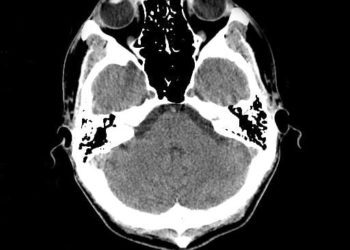Video laryngoscopy leads to higher success on first intubation attempt than direct laryngoscopy
1. In this randomized controlled trial, video laryngoscopy in the context of critically ill adults in the emergency department or intensive care unit (ICU) led to higher rates of success on first intubation attempts than direct laryngoscopy.
2. There was no significant difference in safety outcomes between groups.
Evidence Rating Level: 1 (Excellent)
Study Rundown: The use both of video and direct laryngoscopy for tracheal intubation is supported by international airway management guidelines. Trials comparing the two intubation approaches have shown mixed results on patient outcomes such as a successful first attempt in intubation, an important indicator of reduced risk for life-threatening complications. In this unblinded randomized trial, the use of video compared to direct laryngoscopy was compared for the intubation of critically ill adults in the emergency department or ICU. The operators were predominantly emergency medicine residents or critical care fellows, with most having at least equal experience with both video and direct laryngoscopy. The primary outcome of successful intubation on the first attempt was significantly higher in the video laryngoscope group compared to the direct laryngoscope group. Subgroup analysis showed that most of the difference in the primary outcome between groups can be attributed to operators who had less experience with intubation procedures. For safety, there were no significant differences in the number of severe complications between groups. For limitations, the type and shape of the laryngoscope were not standardized. Since all intubations were performed in the emergency department or ICU, the results may not generalize to other settings.
Click to read the study in NEJM
In-Depth [randomized controlled trial]: In this unblinded randomized trial, tracheal intubation of critically ill adults in the emergency department or ICU with a video laryngoscope (n=712) was compared to a direct laryngoscope (n=705). The intubation procedures were performed by 387 unique operators, who were mostly emergency medicine residents and critical care fellows with a median of 50 past tracheal intubations. Most of the past intubations were performed with a video laryngoscope (median proportion, 0.69; interquartile range, 0.50 to 0.80). For the primary outcome, 85% in the video laryngoscope group compared to 70.8% in the direct laryngoscope group had successful first-attempt intubations (absolute risk difference, 14.3 percentage points; 95% Confidence Interval [CI], 9.9 to 18.7; p<0.001). Most of this difference was attributable to operators with less than 25 previous intubations (absolute difference, 26.1 percentage points; 95% CI, 15.4 to 36.8). The absolute difference between groups among operators with over 100 past intubations was not significant. For the secondary outcome, 21.4% in the video compared to 20.9% in the direct laryngoscope group had a severe complication (absolute difference, 0.5 percentage points; 95% CI, -3.9 to 4.9). The time between procedure initiation and successful tracheal intubation was also significantly lower in the video laryngoscope group (median difference, -8 seconds; 95% CI, -12 to -4). For safety, there were no significant differences in the rate of esophageal intubation, teeth injury, and aspirations. The results show that first-attempt intubation is more likely with a video laryngoscope compared to a direct laryngoscope.
Image: PD
©2023 2 Minute Medicine, Inc. All rights reserved. No works may be reproduced without expressed written consent from 2 Minute Medicine, Inc. Inquire about licensing here. No article should be construed as medical advice and is not intended as such by the authors or by 2 Minute Medicine, Inc.









